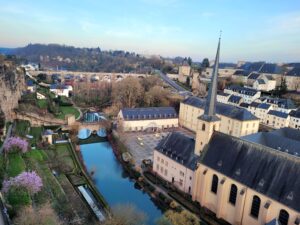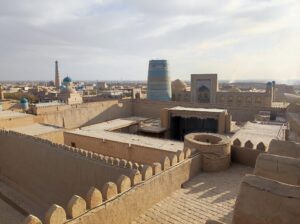During my visit to Madrid, I joined an organized tour of Toledo and Segovia with one of the many tourist agencies offering this excursion. The tour is structured to visit Segovia first, followed by Toledo, and it lasts the entire day. Personally, I’m not a big fan of organized tours, and for these two historic cities, I believe an individual visit is the best option. Both cities are about a hour bus ride from Madrid. If you choose to organize your own trip, plan to spend at least a full day in Toledo and a little more than half a day in Segovia. The tour cost around 70 euros. However, there wasn’t enough time during the tour for in-depth exploration of the cities. Therefore, if you’re in Madrid and wish to visit both cities, I recommend organizing the trip on your own to make the most of your visit.
Segovia
Segovia is a picturesque, historic city located 90 km from Madrid. Since 1985, it has been recognized as a UNESCO World Heritage Site. The influences of Moors, Christians, and Jews who lived and worked in this medieval city for many years are evident on its streets. The remnants of this cultural blend can be seen in the city’s incredible monuments.
The Roman aqueduct of Segovia, likely built around 50 BC, is the city’s most important monument. Remarkably well-preserved, it is the first thing you will see upon entering the city. The aqueduct stands as a symbol of Segovia and is inseparable from its identity. In addition to the aqueduct, Segovia is renowned for its cathedral, one of the last Gothic cathedrals built in Europe, as well as its castle, which served as an inspiration for Disney’s Cinderella Castle.
Toledo
Toledo is located about 70 km from Madrid, perched on a steep rock and surrounded by the Tagus River. With a rich history spanning over 2,000 years, Toledo is one of Spain’s oldest cities, famously known as the “City of Three Cultures.” Throughout its history, Christians, Muslims, and Jews have left a lasting mark on the city’s architecture, reflected in the historic district where synagogues, churches, and mosques stand side by side. Toledo is considered one of the best representations of Spanish culture and history. Since 1986, it has been a UNESCO World Heritage Site. Until 1561, Toledo was the capital of Spain and was once divided into Jewish, Muslim, and Christian quarters. King Philip II moved the capital from Toledo to Madrid partly to gain more freedom from the powerful church influence that dominated Toledo at the time.





